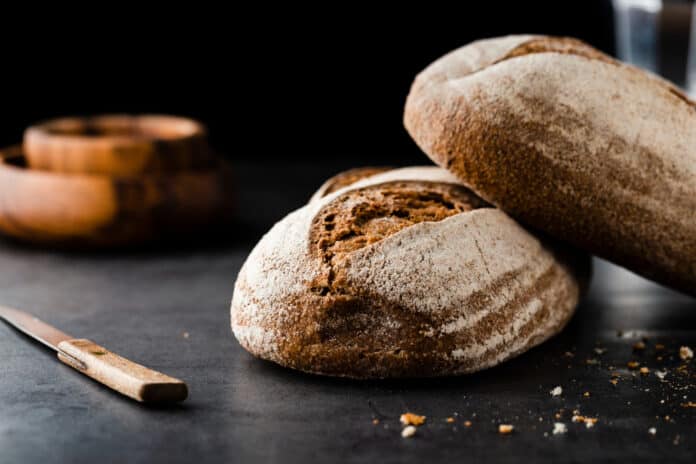Sourdough bread is highly enjoyed for its exceptional flavor. It is associated with sourness as its key flavor characteristic. Whereas thermal reactions during baking predominantly form the bread crust’s flavor, bread crumbs’ flavor is mainly developed by enzymatic reactions during dough fermentation by lactic acid bacteria and yeasts.
Furthermore, the flavor of sourdough bread crumb is influenced by factors including flour type and addition of starter cultures and yeast, as well as fermentation time and temperature.
In a new study, scientists from the Professorship for Food Chemistry and Molecular Sensory Science at the TUM School of Life Sciences identified and quantified the taste-active compounds of sourdough bread crumbs. Using the genomics concepts, a combination of instrumental-analytical techniques, and sensory analyses, scientists decoded the flavor secrets of sourdough bread.
Ten main flavors and eleven important fragrance odorants that might be employed to replicate the distinctive flavor of sourdough breadcrumbs were discovered due to their molecular level measurements and analyses.
First author Laura Eckrich, who conducted the project as part of her doctoral thesis, expects the new findings to benefit the baking industry: “We hope our findings and the quantification method we developed will help bakers achieve consistent quality in their sourdoughs. For example, they can prevent the bread from becoming too sour.”
Scientists discovered lactic acid and acetic acid as distinct tastes in addition to sodium chloride, added to the bread as table salt. During sourdough fermentation, lactic acid bacteria and yeasts produce these flavors in the dough.
The essential ingredients of sourdough are flour, water, living yeasts, and lactic acid bacteria, whose fermentation gives the bread dough its particular flavor and aroma while adding volume to the bread. Sourdough was first used to make bread in ancient Egypt.
Scientists discovered lactic acid and acetic acid as distinct tastes in addition to sodium chloride, added to the bread as table salt. During sourdough fermentation, lactic acid bacteria and yeasts produce these flavors in the dough. The essential ingredients of sourdough are flour, water, living yeasts, and lactic acid bacteria, whose fermentation gives the bread dough its particular flavor and aroma while adding volume to the bread. Sourdough was first used to make bread in ancient Egypt.
Since bread can make up a sizable amount of the daily salt intake, scientists also identified broad potential for lowering the salt concentration in bread. The results may decrease the sodium content of the dough without sacrificing the bread’s distinctive flavor. A group of skilled human tasters analyzed the flavor essences.
Flavor recombination experiments elucidated sodium, potassium, ammonium, chloride, magnesium, calcium, d-fructose, l-glutamic acid, acetic acid, and lactic acid as the essential taste compounds as well as acetic acid, butyric acid, vanillin, 3-methylbutyric acid, hexanal, 2,3-butanedione, phenylacetaldehyde, 3-methylbutanal, methional, (E, E)-decadienal, and (E)-2-nonenal as the essential aroma compounds in sourdough bread crumb.
Scientists noted, “For the first time, the present method enables a unified high-throughput quantitation of the volatile key odorants and the nonvolatile key tastants of sourdough bread crumb with the same instrumental setup. This method can be used to create a blueprint of the valuable aroma and taste compounds of breads to be independent of sensory tests in the future, especially during the industrial production of breads, and to obtain objective statements on the aroma and taste quality of breads.”
Journal Reference:
- Laura Sophie Amann, Olievr Frank, Corinna Dawid, Thomas Frank Hofmann. The Sensory-Directed Elucidation of the Key Tastants and Odorants in Sourdough Bread Crumb. Foods. DOI: 10.3390/foods11152325
